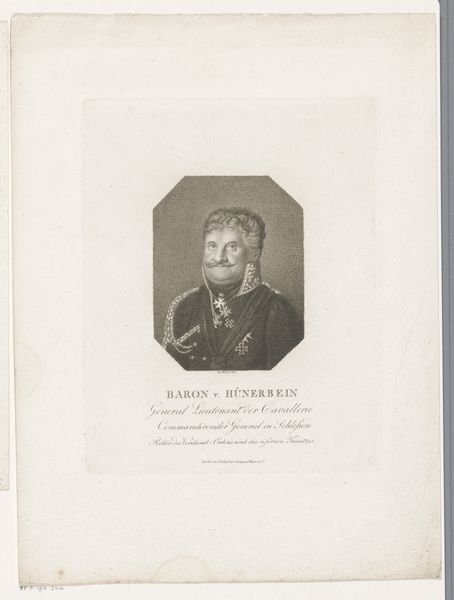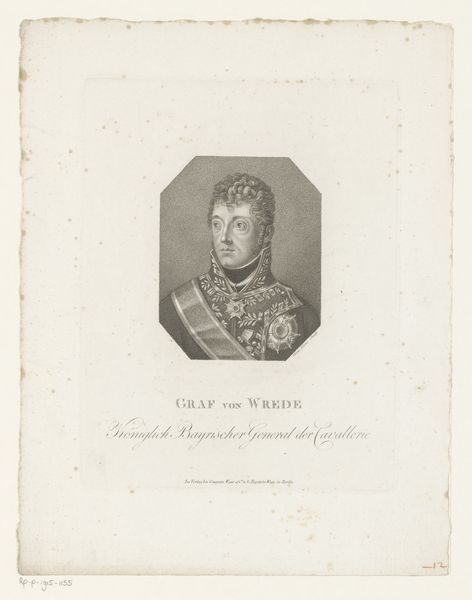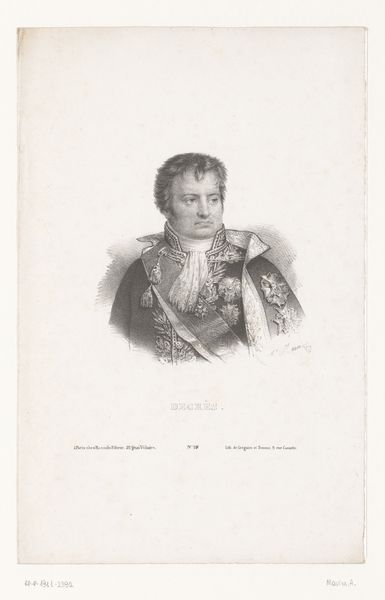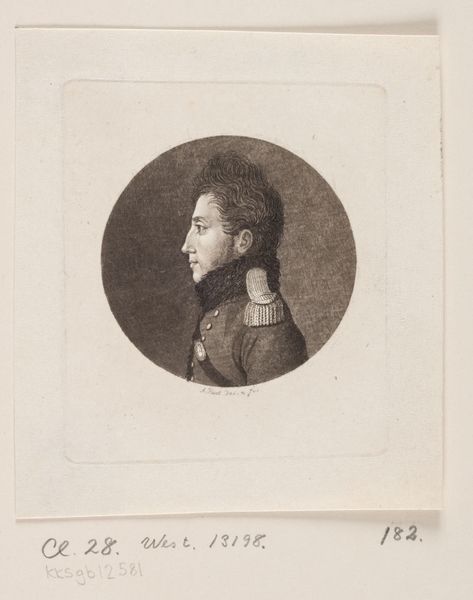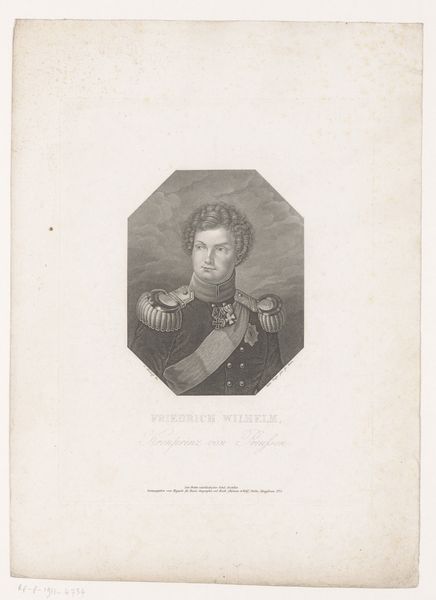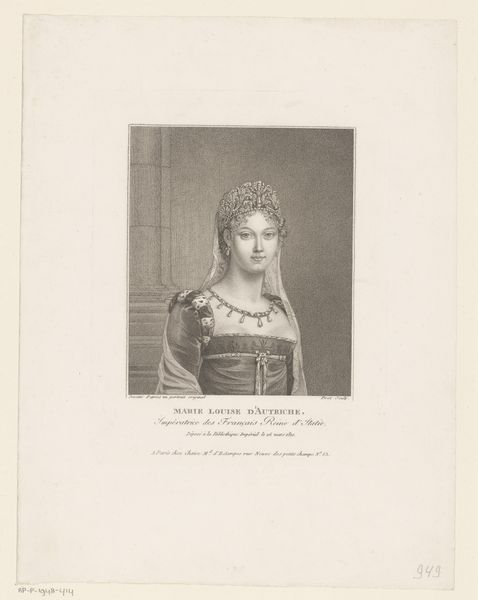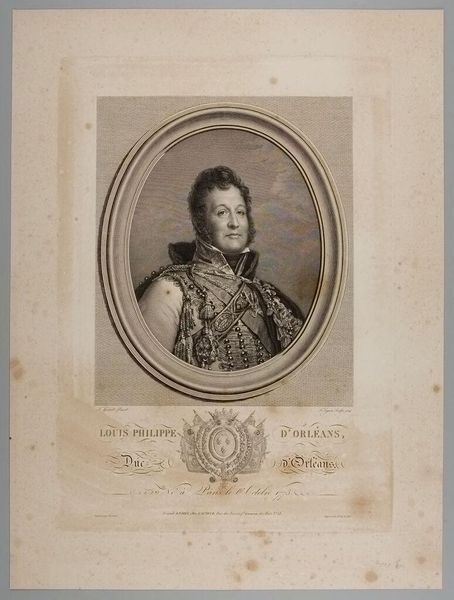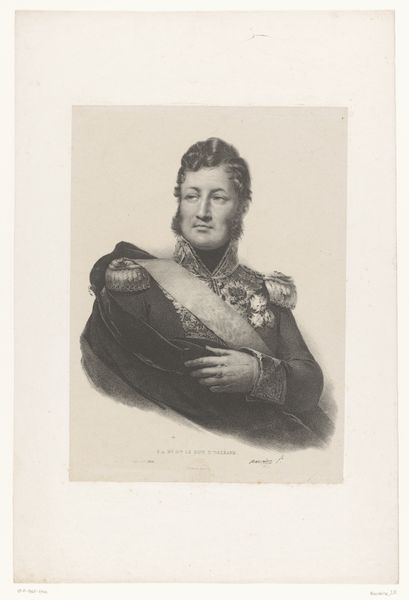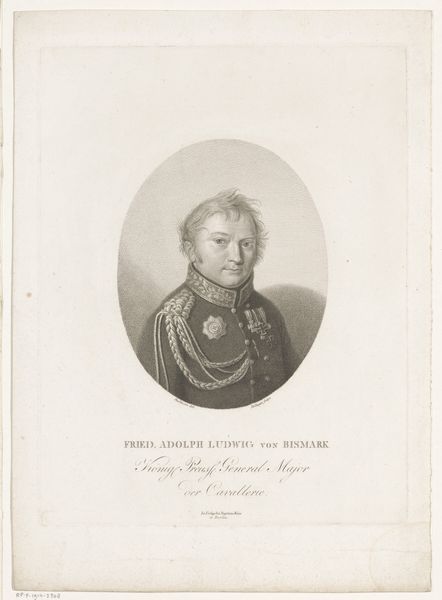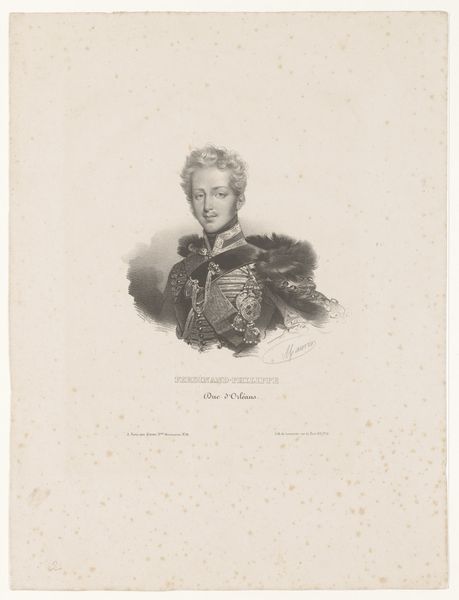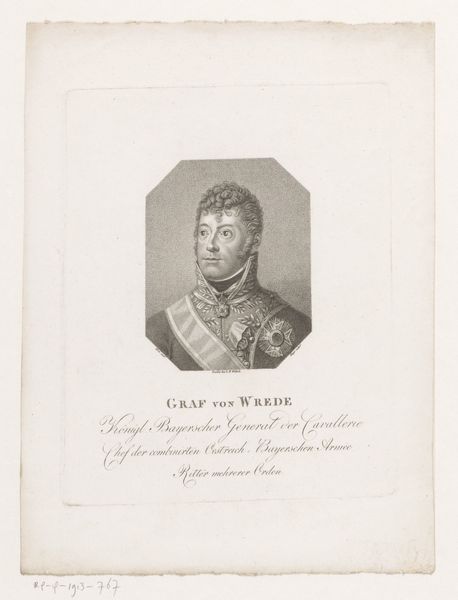
Portret van Alexander Ivanovitsj Tsjernysjov 1814 - 1825
0:00
0:00
print, engraving
#
portrait
# print
#
romanticism
#
history-painting
#
academic-art
#
engraving
Dimensions: height 210 mm, width 162 mm
Copyright: Rijks Museum: Open Domain
Editor: This is "Portret van Alexander Ivanovitsj Tsjernysjov," created sometime between 1814 and 1825 by Friedrich Wilhelm Bollinger. It's an engraving, and something about the subject's gaze feels very imposing, despite the medium. What strikes you about this portrait? Curator: Immediately, I see a statement of power, deliberately constructed through visual language accessible to the 19th-century viewer. It’s interesting to consider who commissioned this work and why. Was it a personal commission by Tsjernysjov himself to enhance his public image, or an official state portrait intended to project authority? The meticulous detail of the engraving allows for widespread distribution, furthering its political potential. Editor: That's a fascinating point. I hadn't considered the potential for mass distribution. Does the style – the almost romantic idealization of the figure – also play into that political angle? Curator: Precisely. The artist uses romantic aesthetics to present Tsjernysjov as a noble, almost heroic figure, fitting into the then-current narrative of powerful leadership and national pride, reflecting the period's desire for a strong state identity after the Napoleonic wars. Consider also, where would images like these be displayed and consumed? What messages are embedded in these choices? Editor: So, it's less about capturing Tsjernysjov's likeness and more about creating a specific image to serve a purpose in society. Curator: Indeed. The "accuracy" of the portrait is secondary to its function as a symbol within the visual culture and the power dynamics of the era. Its presence, from elite homes to public spaces, continuously reinforced existing social hierarchies. Editor: I see the image in a whole new light now! It's fascinating how understanding the socio-political context completely changes my interpretation. Thanks! Curator: It’s crucial to recognize that portraits were never just representations but tools carefully employed within power structures.
Comments
No comments
Be the first to comment and join the conversation on the ultimate creative platform.
